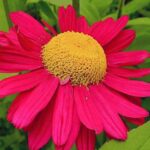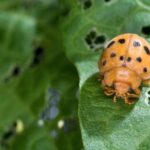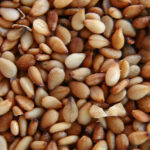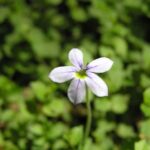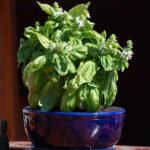West coast dwellers in the United States know the importance of xeriscaping. This low-water gardening technique has taken California by storm. It’s spreading to other areas, too. But finding the right xeriscape plants is a little complex.
Most people think it’s all cacti and succulents, sand, and rock. But your xeriscape garden doesn’t have to be bland! Let’s explore a wide variety of plants that work well in xeriscaping. You’re sure to be surprised by what you’ll find on our list.
What Is Xeriscape Gardening?
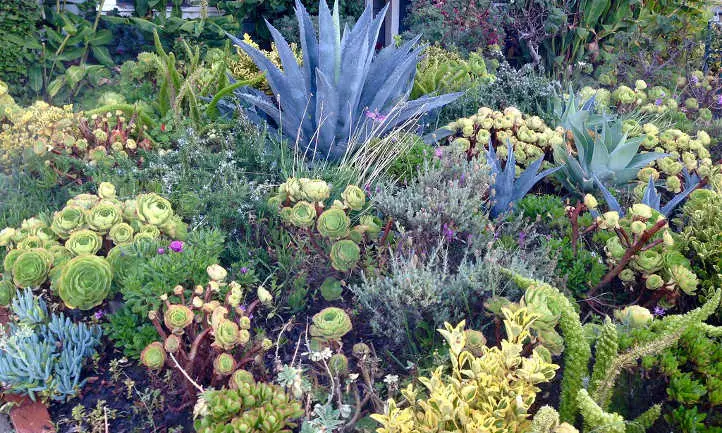
The term “xeriscape” comes from the Greek root word “xeros”, meaning dry. And its origins reveal its purpose. This method of low-water or no-water landscaping is used to reduce the need for irrigation.
Sometimes referred to as water-conserving landscaping or drought-tolerant landscaping, xeriscape is gaining speed. Somehow, it had gained the reputation of looking like a dry, arid moonscape. But that couldn’t be farther from the truth! You can have a lush landscape with xeriscape and reduce your water bills, too.
There are a few principles that are important in xeriscaping. Let’s talk briefly about those.
Principles of Xeriscape
To successfully install xeriscape plants, you do need to follow a few basic rules. These principles will help you to have a sustainable environment year-round.
In short, those rules are:
- Plan everything well in advance
- Limit turfgrass to a minimum
- Choose plants with lower water needs
- Place plants with similar watering needs together
- Use a targeted irrigation system to reduce water waste
- Mulch around plants to reduce water evaporation
- Maintain/prune plants to prevent heavier water needs
Let me elaborate a bit on a few of these.
Planning in advance allows you to gauge where sunny or shady locations in your yard are. You can then place plants of similar light and water needs together.
Most lawns take tons of watering. Switching to xeriscape-friendly ground cover plants can significantly reduce your watering needs.
Using drip irrigation, either with a soaker hose or other system, allows you to target your plants. There’s no need to water a 6ft by 6ft space if you only have plants in three feet of it. It also keeps foliage dry, which reduces the risk of many plant diseases.
Mulch is a wonderful thing. Over time it decomposes and adds valuable organic matter to the soil. But until it breaks down, it acts like a sponge for moisture that would otherwise evaporate out of the soil. Keeping 3-4″ deep mulch around your plants will reduce watering needs significantly.
As plants get larger, their water requirements go up. By keeping your garden maintained, you can keep the watering needs consistent. This makes it easier for you to put your beds on a water timer system and automate some of your work.
Plants You Might Want To Consider
So you’ve decided to make the plunge into water reduction landscaping? Fantastic! Let’s talk plants.
Many green, vibrant plants can be used in xeriscape easily. So too can some grasses. Shrubs are also an option. Do you like flowers? There are drought-tolerant flowering plants! You don’t have to make your garden into the Grand Canyon. It can be as lush and green as you want.
Here’s a sampling of a few of the many types of plants you can incorporate easily. All these xeriscape plants are tried and tested. For now, I’ll focus on the size of the plant, but remember, planning is key. Before you begin, select your plants not only by size, but by watering frequency and light needs.
Very Short (Under 1 Foot Tall)
Ground covers, fairy gardens, and more fall into the very short category. These diminutive options can be used in many ways for visual effect. I especially like these at the front of garden beds or in lieu of lawns.
Sedum rubrotinctum, ‘Pork And Beans’
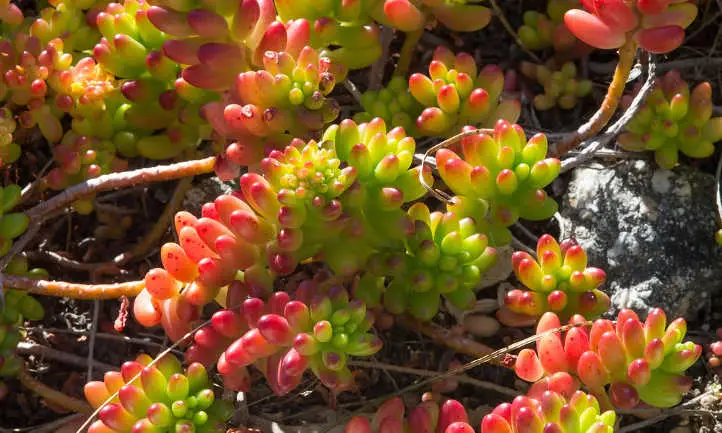
Typically just under a foot tall, sedum rubrotinctum is a succulent. Nicknamed the jelly bean plant or pork and beans, its leaves are roughly bean-shaped. It produces its foliage on long, thick stems. In the spring, bright yellow star-shaped flowers appear. Best in zones 9-11.
Learn More: Jelly Bean Plant Care
Pachysandra procumbens, ‘Allegheny Spurge’
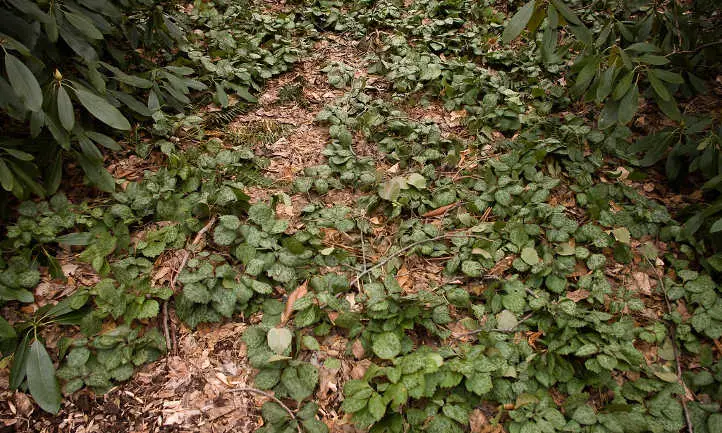
Allegheny spurge is a common ground cover plant. But did you know it can be used in xeriscaping, too? While it prefers moist soil when young, it’s fairly drought-tolerant when mature. It’s a shade lover as well, making it perfect for those odd spots without consistent sunlight. Zones 5-9 preferred.
Learn More: Allegheny Spurge Care
Ophiopogon japonicus, ‘Dwarf Lilyturf’
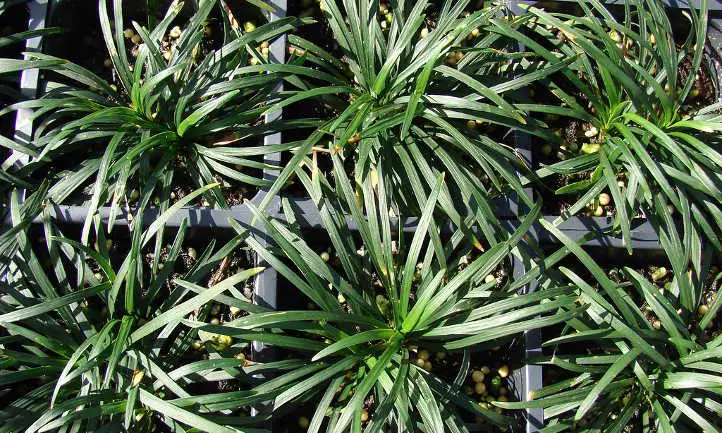
Dwarf lilyturf, sometimes called fountain plant, is one of the tiniest plants on the list. Averaging at about 4″ in height, this little grass can be a ground cover or low-lying bed plant. It prefers damp soil but can take slightly-drier conditions once established. Best in zones 5-9.
Ophiopogon planiscapus, ‘Black Mondo Grass’
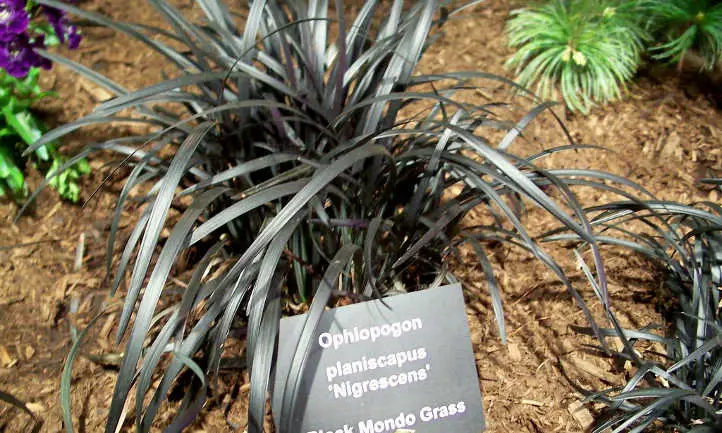
Seeking something darker? Consider black mondo grass. Like dwarf lilyturf, this lily relative develops tight, matted clumps of leaves. But in this case, the leaves are so dark in color they’re nearly black. Averages 8-12″ tall. Another great candidate for your shadier spaces! Zones 5-9.
Learn More: Black Mondo Grass Care
Aloe aristata, ‘Lace Aloe’
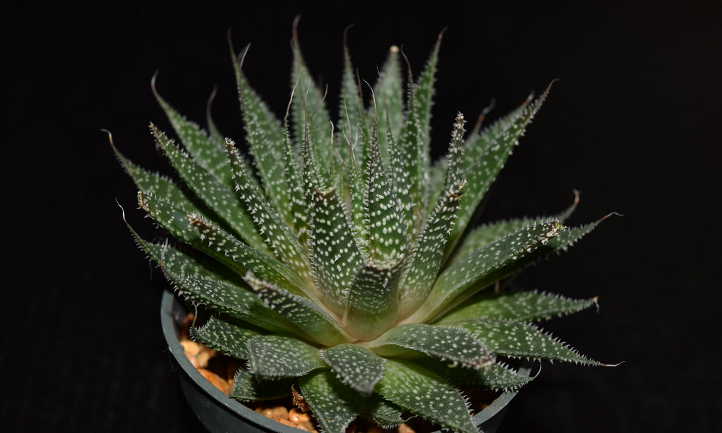
Also called Aristaloe aristata, this plant isn’t a true aloe. It’s more closely related to other species. But its compact 6-8″ circles of sawtoothed spikes create a beautiful globe-like shape. It looks phenomenal in a garden setting, especially when it sends up orange flowers! Grow in zones 7-11.
Learn More: Lace Aloe Care
Erigeron karvinskianus, ‘Santa Barbara Daisy’
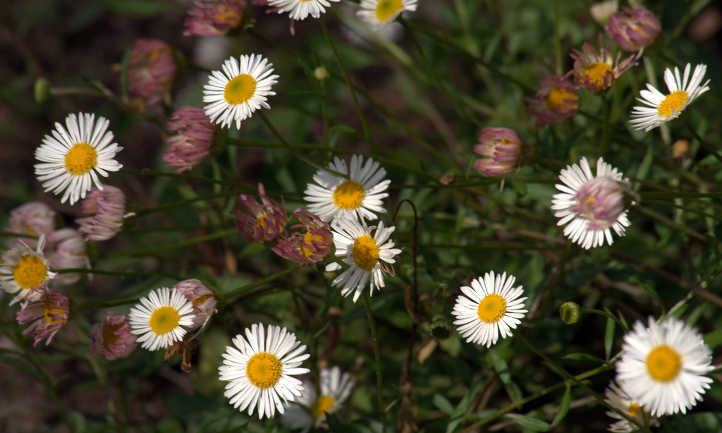
Trailing foliage and constant flowers are a hallmark of the Santa Barbara daisy. This Mexico-native plant is extremely drought-tolerant. Give it a little water, and it immediately fuels an explosion of fresh growth. Short and sweet, this lovely perennial’s best in zones 6-9.
Learn More: Santa Barbara Daisy Care
Euphorbia myrsinites, ‘Myrtle Spurge’
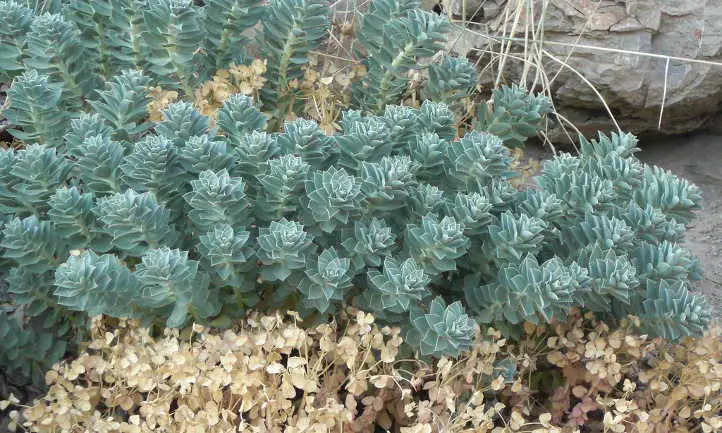
This evergreen perennial’s an interesting one. 4-8″ tall, it has succulent-like leaves that layer in a tight pattern from thick, woody stems. Blue-green in color, myrtle spurge develops showy yellow bracts in the spring. Ideal in zones 5-9.
Learn More: Euphorbia Myrsinites Care
Sedum kamtschaticum, ‘Russian Stonecrop’

Averaging 6″ in height, this sedum groundcover is an herbaceous perennial. Beautiful green oval leaves attach to long, trailing stems. Russian stonecrop produces tiny yellow flowers during the summer months. The flowers turn to small, scarlet-red fruit in fall. In winter it loses most of its leaves. Best in zones 3-8.
Learn More: Sedum Kamtschaticum Care
Juniperus conferta, ‘Shore Juniper’
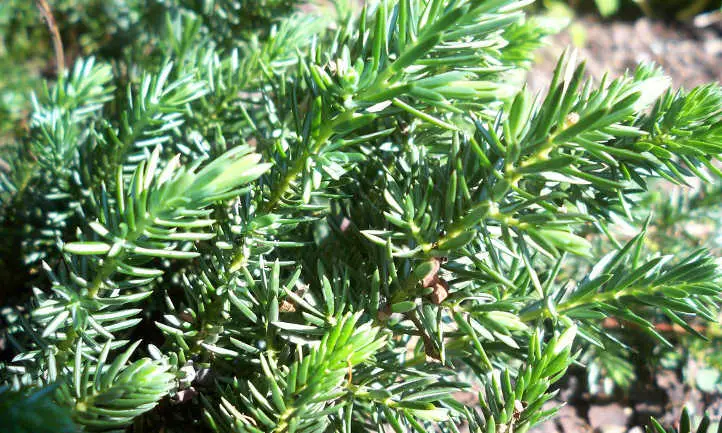
This evergreen coniferous shrub is a popular ground cover. Blue-green needles, just under an inch in length, extend from its woody stems. It produces seed cones which turn silverish when mature. It grows 6-12″ tall. Popular for erosion control, it thrives in zones 6-9.
Learn More: Shore Juniper Care
Callirhoe involucrata, ‘Purple Poppy-Mallow’
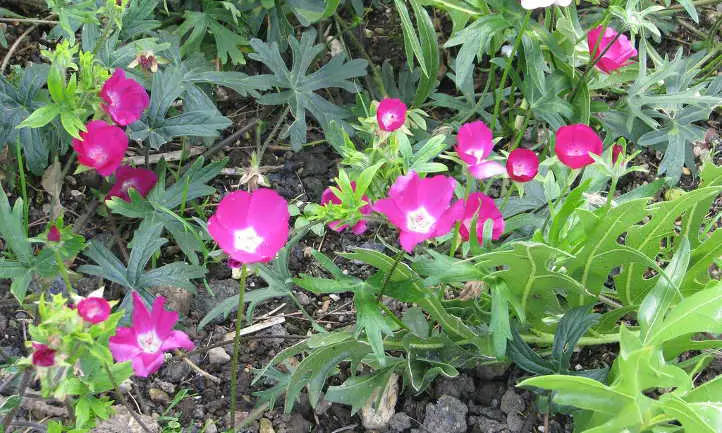
Missouri prairies and flatlands are the home of the purple poppy-mallow. Growing 6″-12″ in height, this herbaceous perennial produces cup-shaped magenta flowers. Its deep roots give it lots of drought tolerance. Zones 4-8 are ideal for this plant.
Learn More: Purple Poppy-Mallow Care
Short (1-2 feet tall)
For bedding plants, borders, or just plain beautiful, short plants are the way to go. You can stagger different levels of plants together in a formal style. Alternately, you can choose a single-height cacophony of color and texture. The choice is up to you!
Aloe brevifolia, ‘Crocodile Aloe’
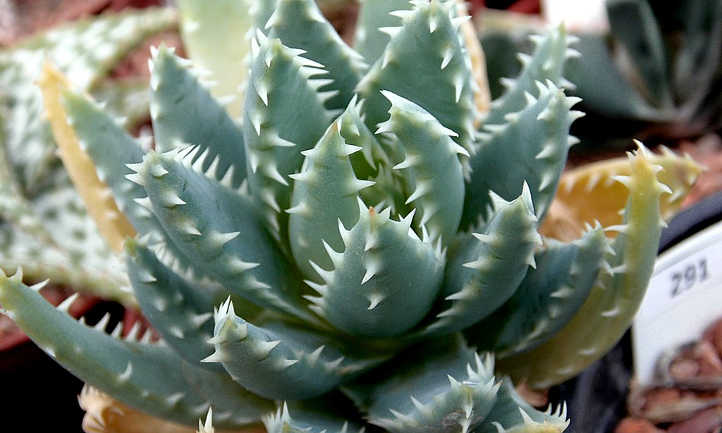
Another sweet little succulent, this one is a true aloe. The crocodile aloe teeters at the 12-14″ range. So named because of its toothed leaves that resemble crocodile mouths, it’s evergreen and lovely. A warm climate plant, it performs best in zones 9-11.
Learn More: Crocodile Aloe Care
Salvia sonomensis, ‘Sonoma Sage’
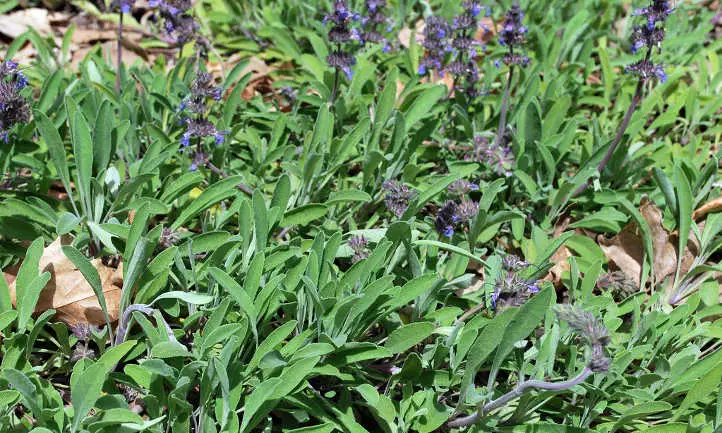
Sonoma sage is one of my top choices for xeriscape gardening. It’s absolutely beautiful, especially when it’s producing its purple-blue flower spikes. Silvery-green leaves on its 12-14″ stems are lightly scented when sun-warmed. It thrives in coastal or foothill environments in zones 8-10.
Learn More: Sonoma Sage Care
Salvia chamaedryoides, ‘Germander Sage’
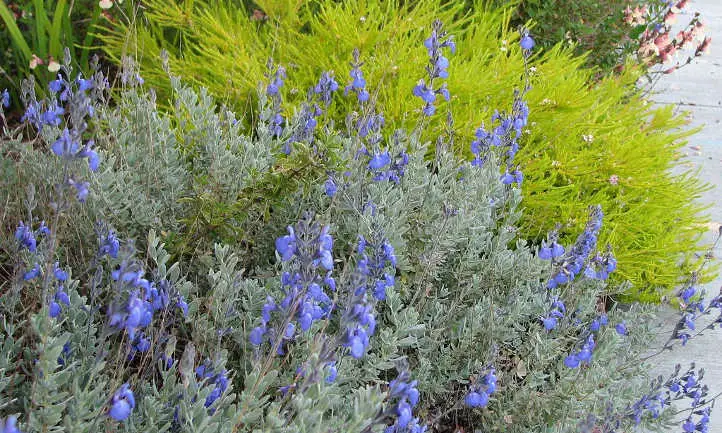
At its tallest, germander sage reaches 2 feet. Its grey-green leaves grow on long, straight stems in a shrublike formation. Vividly blue flowers develop on long flower spikes at least twice a year and sometimes more. A Mexico native, it grows in zones 9-10.
Learn More: Caring For Germander Sage
Oxalis triangularis, ‘False Shamrock’
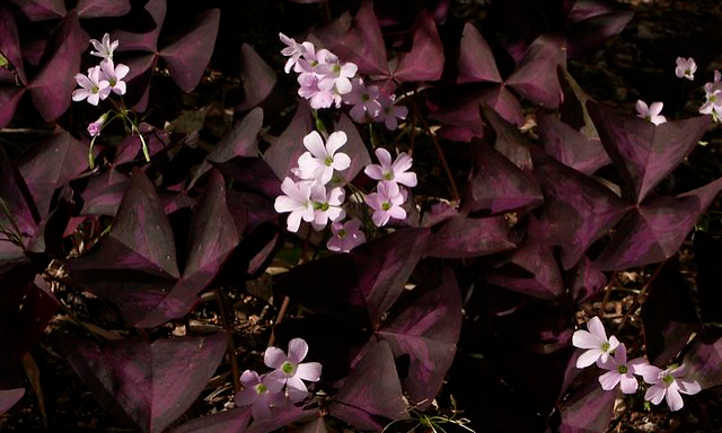
False shamrock is a very unusual plant. Its leaves move in response to light, folding at night and unfolding during the day. The triangular leaves can be green, pink, purple, or a mixture of the three. This unique perennial plant’s leaves are edible, too! Grows optimally in zones 8-11.
Learn More: Oxalis Triangularis Care
Rohdea japonica, ‘Japanese Sacred Lily’
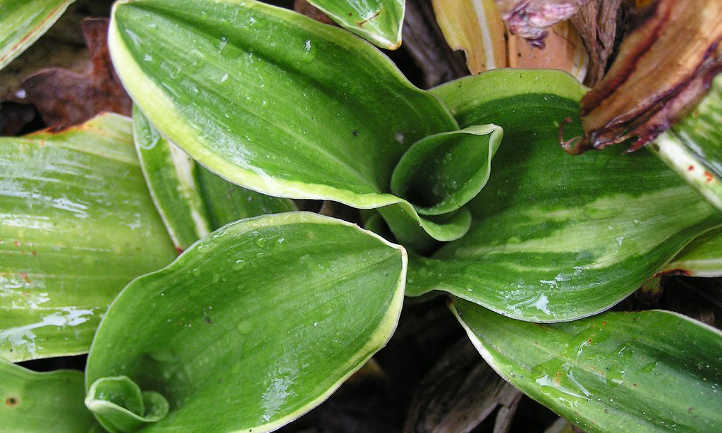
The Japanese sacred lily, Rohdea japonica, is a fibrous-rooted plant. Long, mid-green leaves help direct rainfall towards the center of the cluster. Flower spikes bloom in a cluster of pale yellow blooms which later form red, inedible berries. This plant averages 18″ in height, and grows in zones 6-10.
Learn More: Japanese Sacred Lily Care
Lycoris radiata, ‘Equinox Flower’
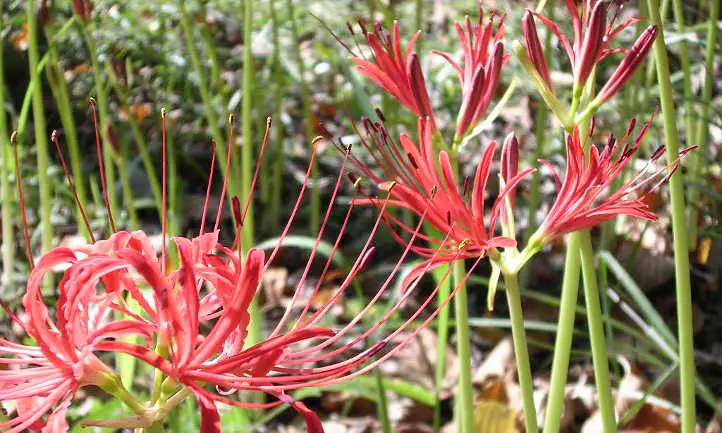
Equinox flower, sometimes called the red spider lily, is gorgeous. They bloom after the first full rain in the fall. A bulbous perennial, the bulbs are toxic. They’re strong enough that they’re planted around rice paddies in Japan to keep pests and mice out! These grow in zones 6-10.
Learn More: Equinox Flower Care
Eragrostis spectabilis, ‘Purple Lovegrass’

Ornamental grasses like the purple lovegrass can be used in landscaping very easily. This late summer blooming plant produces reddish-purple flowers in August. By October, the flowers fade once more. It’s a perfect candidate for a wildflower garden look! Ideal in zones 5-9.
Learn More: Purple Lovegrass
Oenothera fruticosa, ‘Narrow-Leaved Sundrops’

Sundrops are an herbaceous perennial which are native to eastern North America. In the late spring, it produces clusters of four-petaled yellow flowers. Excellent in wild gardens or cottage gardens, they grow in zones 4-8.
Learn More: Oenothera Fruticosa Care
Helleborus foetidus, ‘Stinking Hellebore’
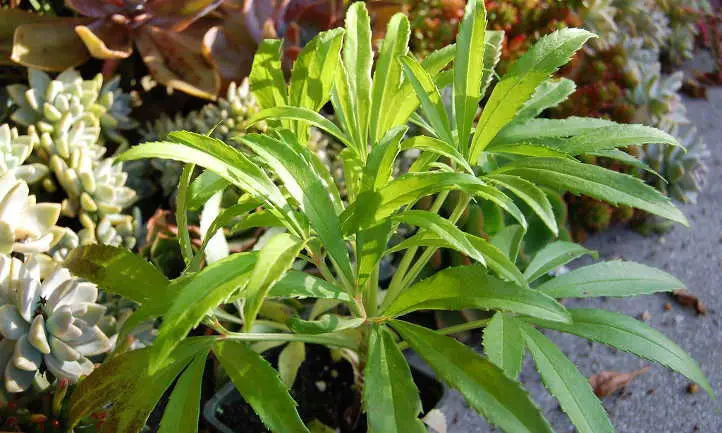
Another unusual xeriscape plant, the stinking hellebore does in fact stink. Bruised leaves can smell unfamiliar, and the flowers are a bit pungent. But as long as you aren’t beating up your plants, it’s a wonderful xeriscape option! Its flowers are greenish-white and bell-shaped, and it grows in zones 5-9.
Learn More: Helleborus Foetidus Care
Santolina chamaecyparissus, ‘Lavender Cotton’
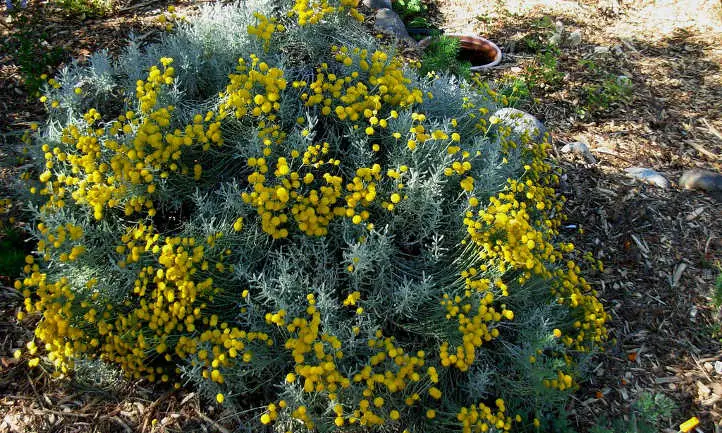
Showy yellow flowers explode out of the mounding shrub known as the lavender cotton. A summer bloomer, it produces an astonishing number of flowers when it blossoms. The rest of the year, it’s a beautiful mound of silvery-grey foliage with a slight musky scent. Best in zones 6-9.
Learn More: Santolina Chamaecyparissus Care
Moderate (3-5 feet tall)
Looking for something larger to act as a centerpiece? Or maybe you’ve just got lots of space and want to be up to your chest in garden glory? There’s options for you!
Muhlenbergia capillaris, ‘Pink Muhlygrass’
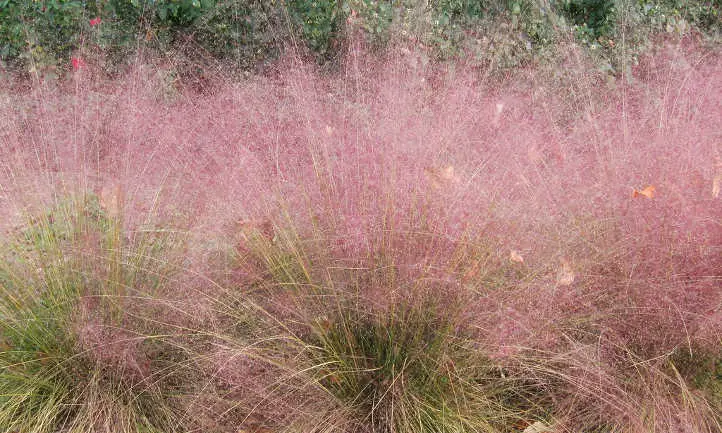
Growing to heights of 2-3 feet, this ornamental muhly grass is lovely. Throughout most of the spring and summer, it is a lushly green grass. But in the fall, long inflorescences of pinkish-red flowers rise up above the grass. It looks like a cloud of cotton candy just grew in the garden! It’ll be happiest in zones 5-9.
Learn More: Pink Muhly Grass Care
Lobelia laxiflora, ‘Mexican Cardinal Flower’
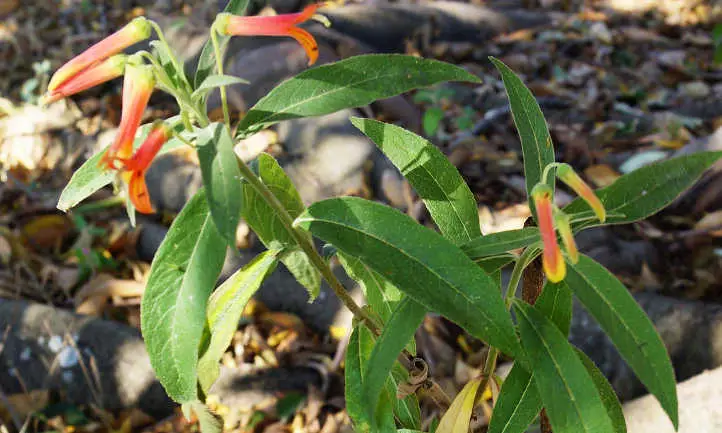
The Mexican cardinal flower should be more popular! Its woody, nearly 3′ stems support bright red tubular flowers until the first frost. Beneath the flowers is a swath of green lance-like leaves. Uncommon in most traditional gardens, it’s perfect for xeriscape. Heat and sun-loving, it thrives in zones 9-11.
Learn More: Lobelia Laxiflora Care
Gaura lindheimeri, ‘Lindheimer’s Beeblossom’
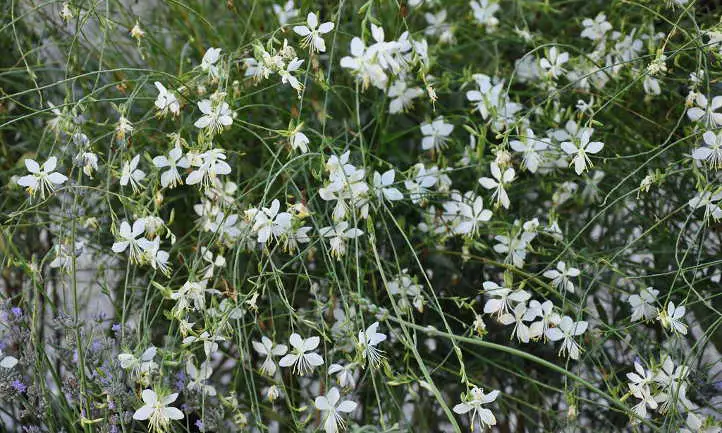
Often referred to as gaura, this 3-5 foot shrub is a perennial. It’s a must for wildflower gardens where it can sprawl out! Its flowers bloom from August to October. They start as pink buds and turn white as flowers, gradually shifting back to pale pink. Grow this in zones 5-9.
Learn More: Gaura Lindheimeri Care
Eryngium yuccifolium, ‘Rattlesnake Master’
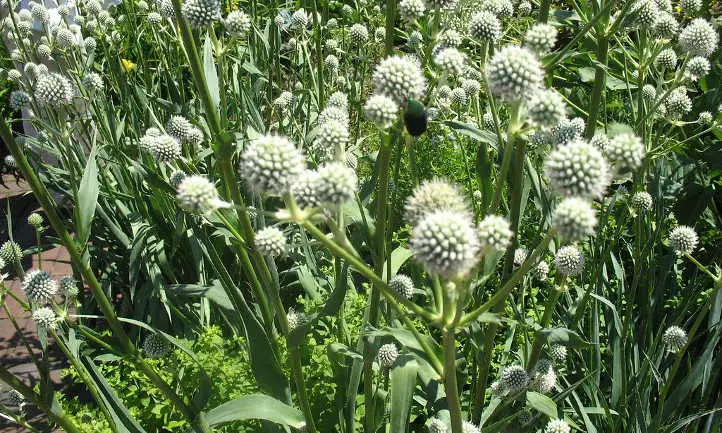
Rattlesnake master is a strange herbaceous plant. A member of the parsley family, it produces 3-4′ long sword-like leaves. Tiny greenish-white flowers are densely packed into globe-like flower heads that resemble thistles. Common on the prairie, it grows in zones 3-8.
Learn More: Rattlesnake Master Care
Dasylirion wheeleri, ‘Desert Spoon’

A relative of the asparagus, this desert plant is called desert spoon. The name comes from the single flower stalk that it puts up each year. While the spiky plant itself can reach 4 feet, the flower stalk can reach 15′! It’s topped with thousands of white or pinkish-purple blooms and looks like a giant spoon. Grows in zones 6-10.
Learn More: Desert Spoon Care
Pycnanthemum tenuifolium, ‘Slender Mountain Mint’
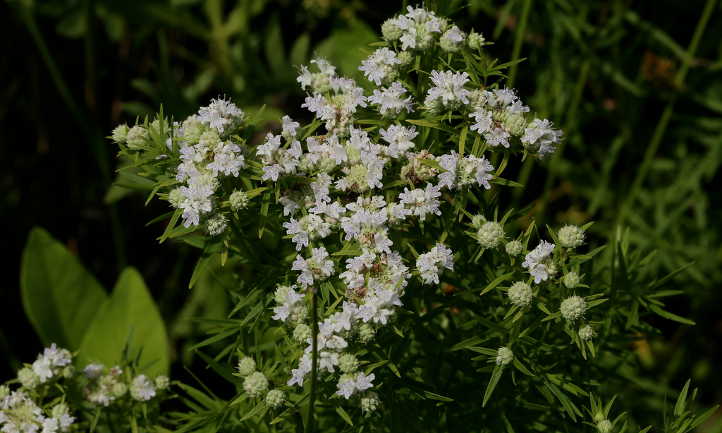
While the name would suggest it dwells in the mountains, mountain mint doesn’t. Grown in prairies or along roads, this 2-3′ tall plant has needle-like leaves. When crushed, the leaves give off a minty aroma. White clusters of flowers bloom in mid to late summer. Does well in zones 4-8.
Learn More: Narrow Mountain Mint Care
Phlomis fruticosa, ‘Jerusalem Sage’
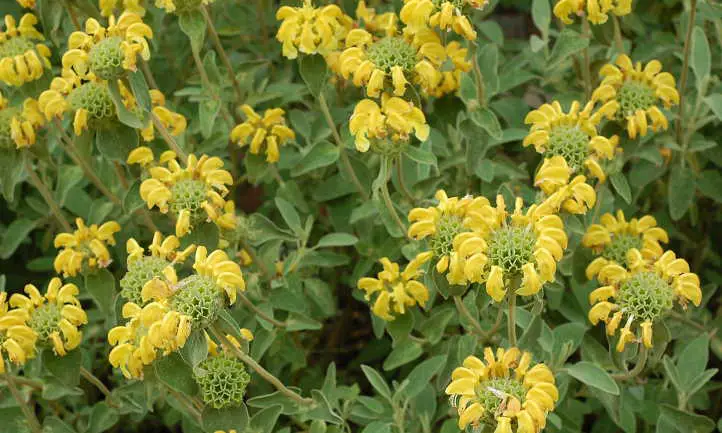
Jerusalem sage isn’t a true sage, but its leaves look like sage! Through the summer, round clusters of bright yellow flowers emerge from the stems. This mounding perennial can reach 4′ tall, and remains evergreen in zones 8-10.
Learn More: Jerusalem Sage Care
Salvia guaranitica, ‘Anise-Scented Sage’
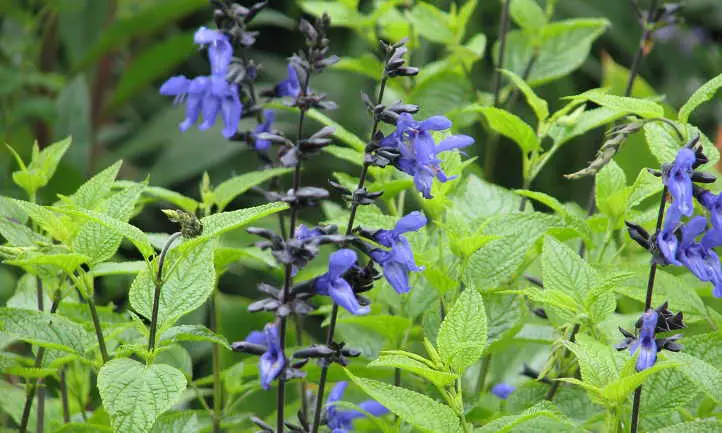
As an annual, anise-scented sage grows to about 3′ tall. Grown as a perennial, it can reach 5′, sometimes even larger. It produces vivid, dark blue tubular flowers from midsummer into the autumn. The foliage is dark green. Alas, it isn’t very anise-scented when bruised. But it’s beautiful, and grows in zones 8-10.
Learn More: Salvia Guaranitica Care
Agave ovatifolia, ‘Whale’s Tongue Agave’

When people think of succulents, they think of plants that are anywhere from a couple inches to a foot. Whale’s tongue agave is far bigger than that. These can hit 4′ tall and about 6′ across, and their flower spike can tower to 15′! This powerful accent plant can be grown in zones 7-11.
Learn More: Agave Ovatifolia Care
Tall (5+ feet tall)
From small palm trees to large coneflowers, there’s some tall choices available. You can go vertical along your fenceline with ease!
Rudbeckia maxima, ‘Large Coneflower’
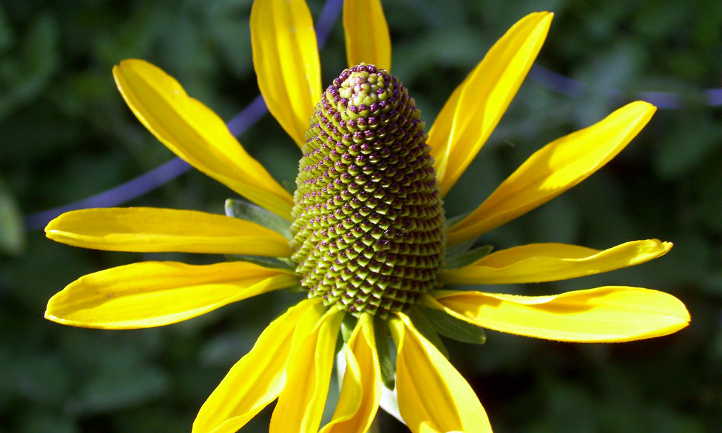
Paddle shaped leaves up to 24″ in length, a flower stalk that can reach seven feet… and it flowers, too! The large coneflower produces huge yellow flowers with a dark brown central cone. A flashy centerpiece for your xeriscape garden, it’ll grow in zones 4-9.
Learn More: Rudbeckia Maxima Care
Coreopsis tripteris, ‘Tickseed’
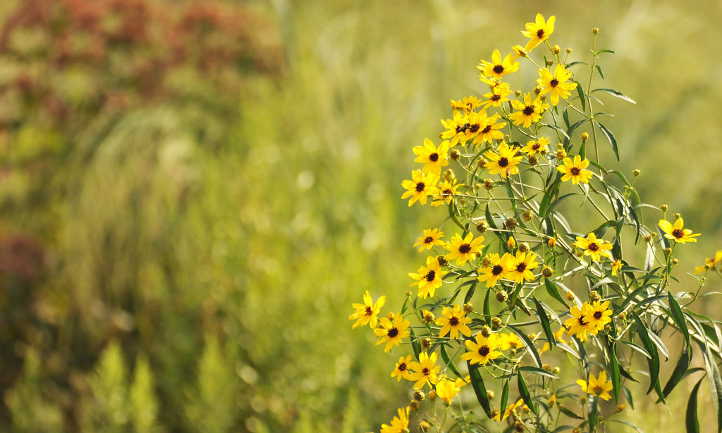
Another prairie plant, the tall tickseed can range between 4-8′ in height. Its yellow, daisy-like flowers bloom from mid-summer well into the fall. In moist soils, it tends to sprawl, but in drier soils will fare well. It could use some support in windy regions. Ideal in zones 3-8.
Learn More: Tall Tickseed Care
Romneya coulteri, ‘California Tree Poppy’
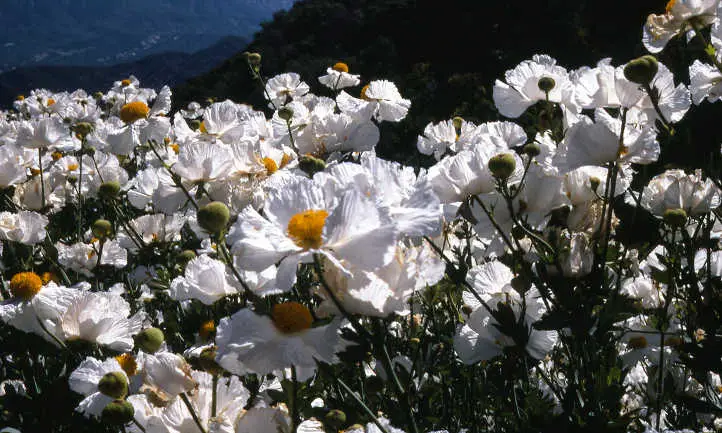
The California Tree Poppy is a true California native. Growing nearly eight feet in height, it can spread via rhizomes over huge areas. It’s been rumored that they’ll grow under your house and come out on the other side! These plants produce open, airy and large white flowers. They lose their leaves in the summer and fall, but come back again in the spring. Best in zones 8-10.
Learn More: Romneya Coulteri Care
Dioon edule, ‘Virgin’s Palm’
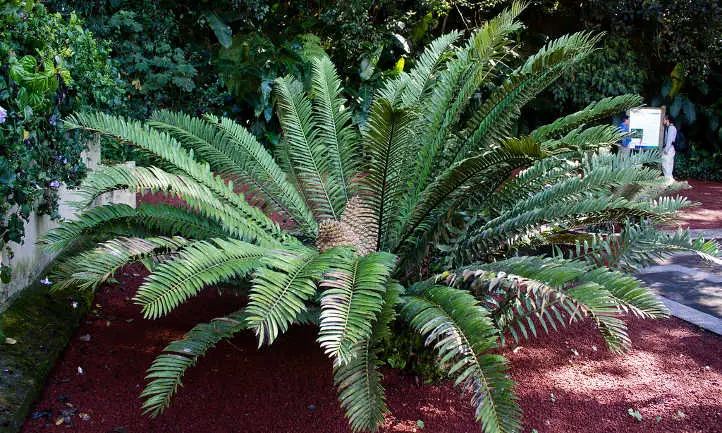
Want something that looks like it belongs in a tropical paradise? The Virgin’s Palm meets your criteria perfectly. This slow-growing cycad can reach 8′ tall in time. It likes full sun or partial shade, and makes for a wonderful accent plant. Subtropical, it prefers zones 9-11.
Very Tall (Over 10 feet tall)
Staggeringly tall, the yucca is a mainstay of the desert. And while you don’t have to have red rocks and cacti everywhere, you can still use these immense plants. Here’s a couple examples for you to check out!
Yucca rostrata, ‘Beaked Yucca’

The beaked yucca looks like a fuzzy tree from a distance. Up close, you can see its round, spiky top holds thousands of 2′ long slender leaves. The fuzzy-looking trunk is actually covered with older leaves that have collapsed downward. If you want an unusual “tree” that looks like it came straight out of wonderland, choose this! It can be grown in zones 5-11.
Learn More: Yucca Rostrata Care
Yucca aloifolia, ‘Spanish Dagger’
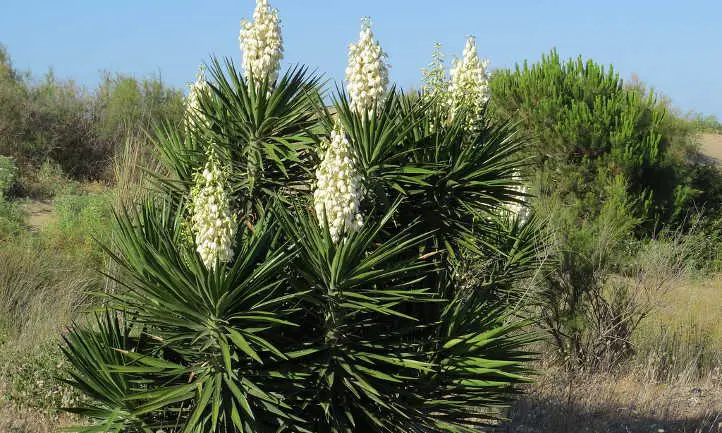
Reaching up to 12-15′ in height, Spanish dagger is aptly named. Two-foot leaf spikes with sharp serrations along them clamber up its trunk. Settlers used to make rope from the leaf fibers. Its flowers form in clusters that can reach 2′ in length, and they are reputed to be edible. Birds love the fruit that forms from the spent blooms. Grows in zones 8-10.
Learn More: Yucca Aloifolia Care
Now, this is just the beginning. There’s hundreds of other xeriscape plants that exist out there. I’ve only provided a small sampling of the diversity that exists. These plants can all survive in low to no water conditions. They range from weedy to shrubs, leafy to treelike, and everything between. There’s tons of flower potential to dazzle the senses, too.
So don’t poo-poo the water conservation gardens! With a little preparation, you too can have the lush landscape you’ve been dreaming of… all while dropping the water bill.



